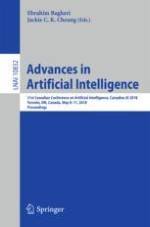2018 | OriginalPaper | Chapter
MedFact: Towards Improving Veracity of Medical Information in Social Media Using Applied Machine Learning
Authors : Hamman Samuel, Osmar Zaïane
Published in: Advances in Artificial Intelligence
Publisher: Springer International Publishing
Activate our intelligent search to find suitable subject content or patents.
Select sections of text to find matching patents with Artificial Intelligence. powered by
Select sections of text to find additional relevant content using AI-assisted search. powered by
